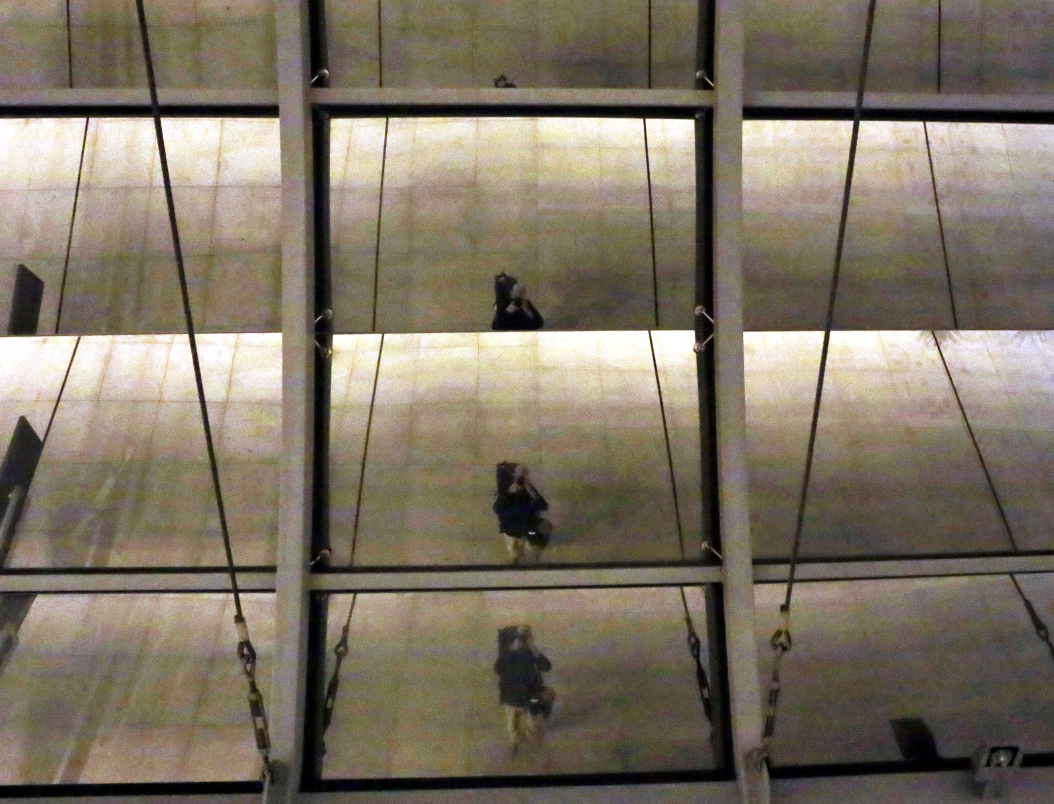Málaga-Costa del Sol Airport
The flight from Helsinki arrived at Malaga Airport at five minutes past midnight. Our flight was the last one of the day, so the airport was deserted. The baggage claim hall was empty, and the suitcases from our flight appeared on one of the tapes about 15 minutes after the flight ended. But then the oddities began - everyone had already taken their things, and my backpack was still not found. Swearing to myself, and then out loud (there was no one left in the huge hall) at Finnair, and passenger aviation in general (on the previous trip, my luggage was lost on the way there and back), I went to look for the Lost-Found office. The difficulty was that there was absolutely no one to ask. After passing through the pick-up hall from end to end, I found only the Iberia airline ticket counter open - it looks like there is no single service at Malaga Airport, you need to contact your carrier's office. There was nothing else to do, so I went there. The girl glanced at my luggage receipt, without further ado wrote on a piece of paper - belt 37 and showed me where to go. In complete disbelief, I went to look for tape 37 and found it in a separate area surrounded by glass walls. As I passed through the turnstile, I immediately saw my backpack lying desolate on the tape. There was a security area on the opposite wall, and I realized it was a customs control room. I went through passport control in Helsinki, and my luggage was checked in Yekaterinburg, and most likely the Finns transferred it to the plane flying to Malaga without customs procedures. This is the first time I've seen this in the entire history of my transit flights. I suspect that the information about this was on the display of the issue feed, there really were some letters running there, but I didn't pay attention to them. Live for a century and learn for a century...and you'll still die a fool.

The luggage business took me about an hour, and by the time I got outside, the last train to Malaga had long since left. A taxi is not included in the list of vehicles I use and is not provided for in the trip budget, I also did not book an overnight stay today, deciding that it is better to spend the night at the airport than to pay for almost the past day.

I decided to pass the night in the modern T3 terminal, which was opened not too long ago, in 2010. There weren't many seats, but there were enough available seats to make it comfortable. But then there was an ambush - the chairs were separated by armrests, and therefore it was impossible to take a lying position. With a little wisdom, I made a bed with a backpack and warm clothes, on which I could put my head and give my legs a horizontal position. At the same time, I was left in only my shirt, which, one might say, was looked at with horror by two girls sitting in chairs opposite and wrapped in jackets with fur collars. In general, I managed to get enough sleep, and between repacking on the other side, I slowly ate the food supplies that I had saved up especially for this night from home. For those who want to repeat my experience, I would like to inform you that I did not see any open public catering outlets at the night airport.

By 5 o'clock in the morning, I didn't want to sleep any more, so I went to get acquainted with the airport. Terminal T2, built in 1991, is named after Pablo Picasso, the most famous native of Malaga.

Here the environment is simpler, and the chairs are not soft, as in T3, but made of perforated metal, and also with armrests. Aeroflot's office is located in this terminal.

Malaga airport (in Spanish: Aeropuerto de Málaga-Costa del Sol, code AGP) is the fourth largest passenger airport and the main "beach airport" in Spain. Now it is the first half of April, and the beach season is still far away, so the airport is quiet and peaceful.

Then I looked at the T3 terminal, designed by Bruce Fernbecks. The facade is 225 meters long, and the area of the premises is a quarter of a million square meters. The terminal is used for both domestic and international flights within the Schengen area. There were wide concrete benches in the pedestrian zone under the huge awning that covered the transport interchange, and I thought that it would be much more comfortable to spend the night here than in the terminal - it was at least 20 degrees outside even in the morning.

A covered gallery leads from the international terminal to the railway station. The station is located underground, the entrance to the platforms is through turnstiles, as in the metro. The ticket can be purchased at a vending machine, the fare to the city is 1.80 euros, it takes 11 minutes to go. If you need to go towards Fuengirola, take the train going in the opposite direction. Fuengirola is a 35-minute train ride, with a ticket price of €3.60. To Malaga, the first train departs at 6:44, the last at 0:54, to Fuengirola-at 5: 23 and 23: 42, respectively. The driving interval is 20 minutes (Malaga commuter railway scheme).

The gallery ceiling is covered with mirror panels.

The hope of killing a little time to shoot airplanes did not materialize - the darkness categorically did not want to retreat (the sun is already shining with might and main at this time). Not only that, but when I arrived in the city around 7 a.m., I found it dark and sleeping, and it wasn't until I reached my new abode, booked through Airbnb, that the sky began to slowly lighten.
